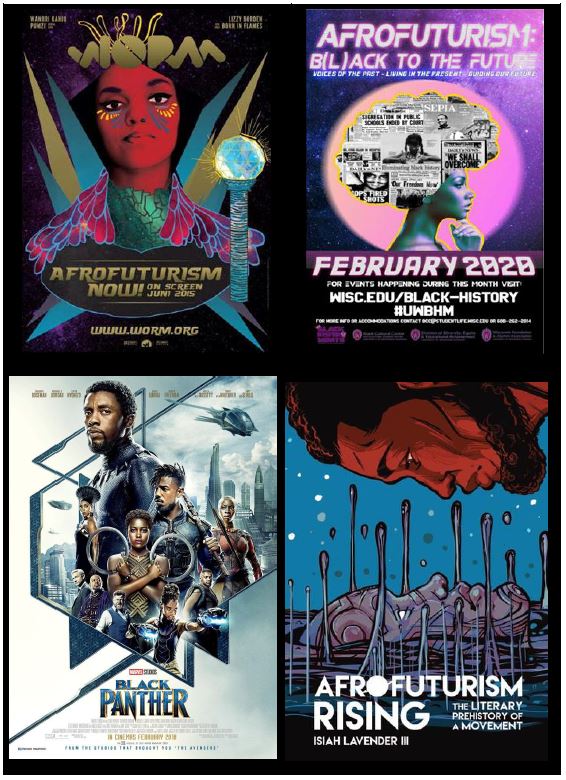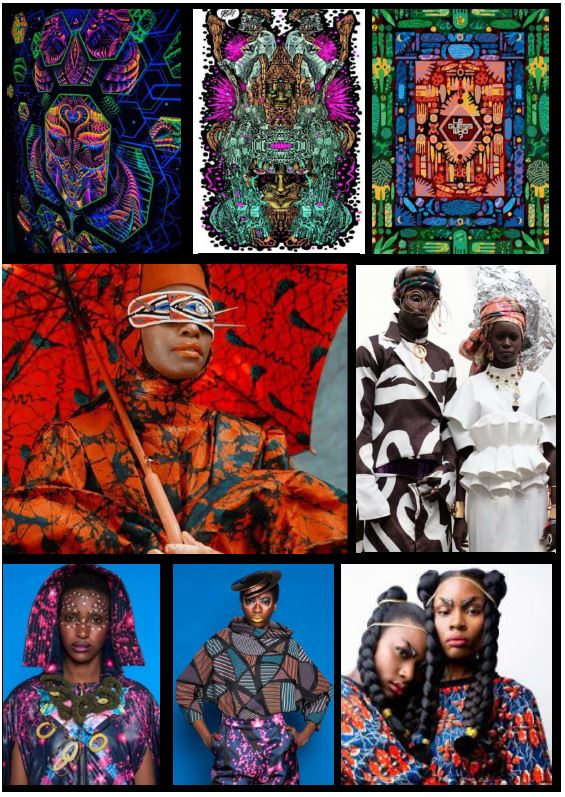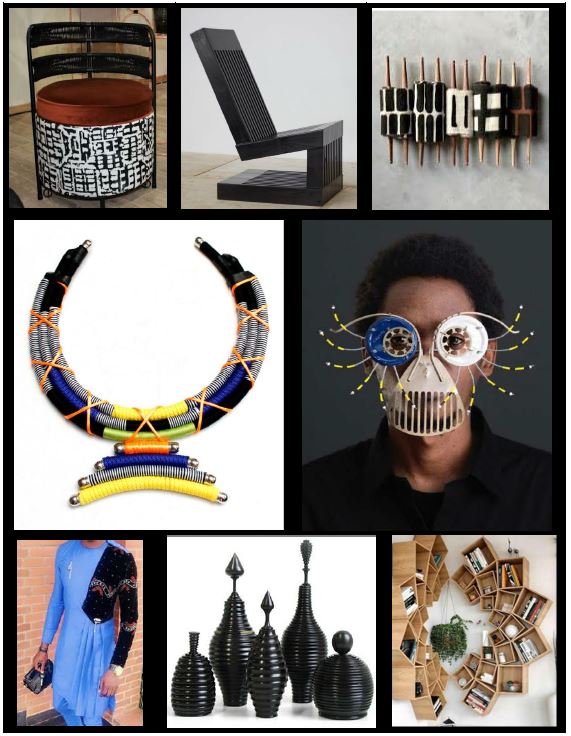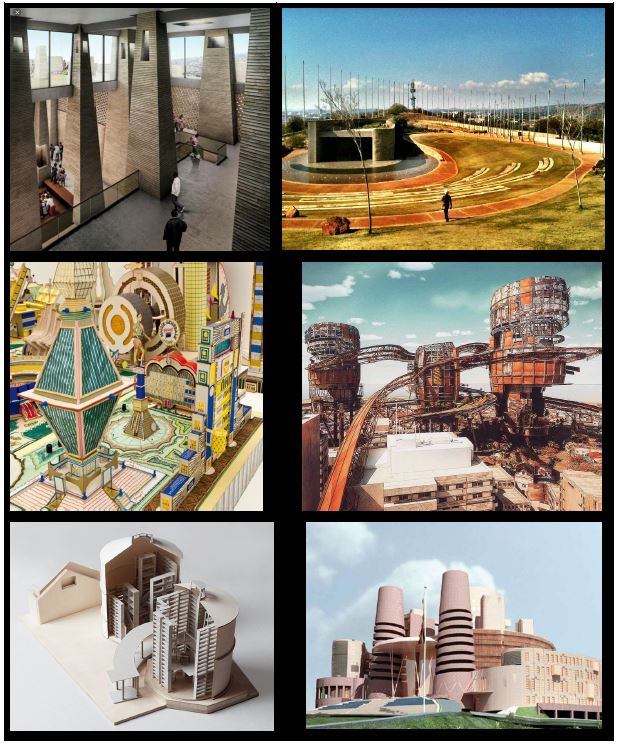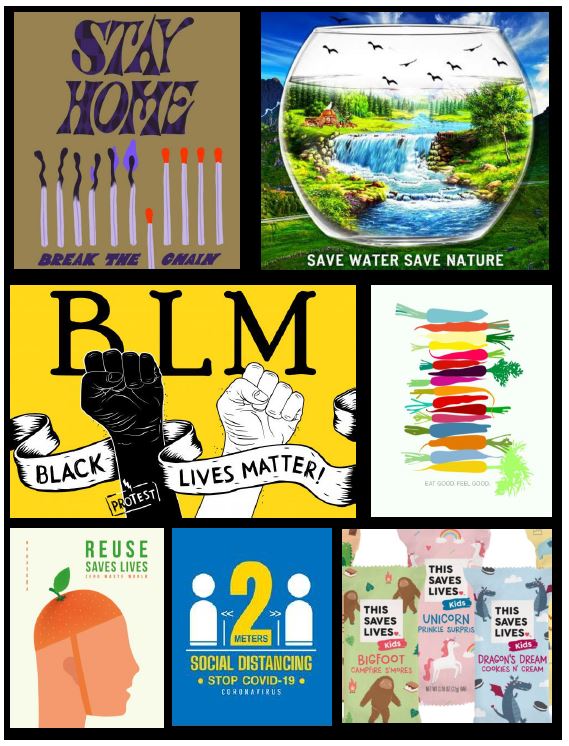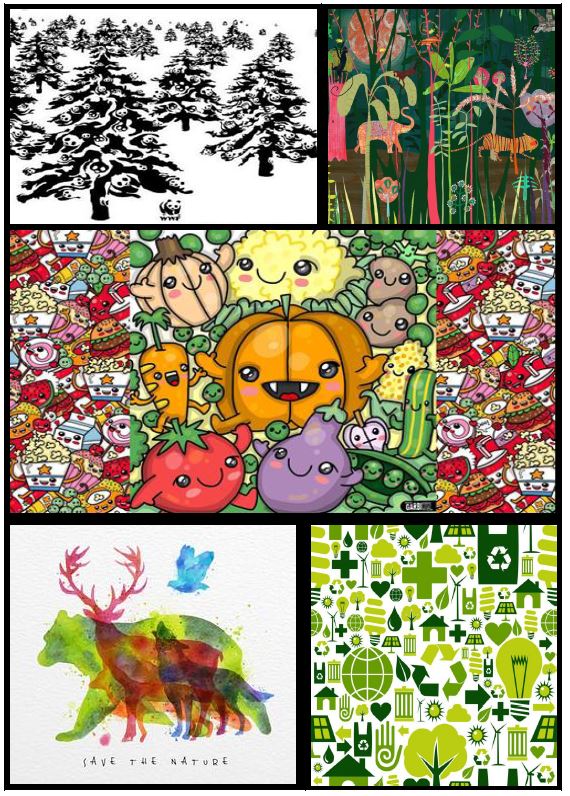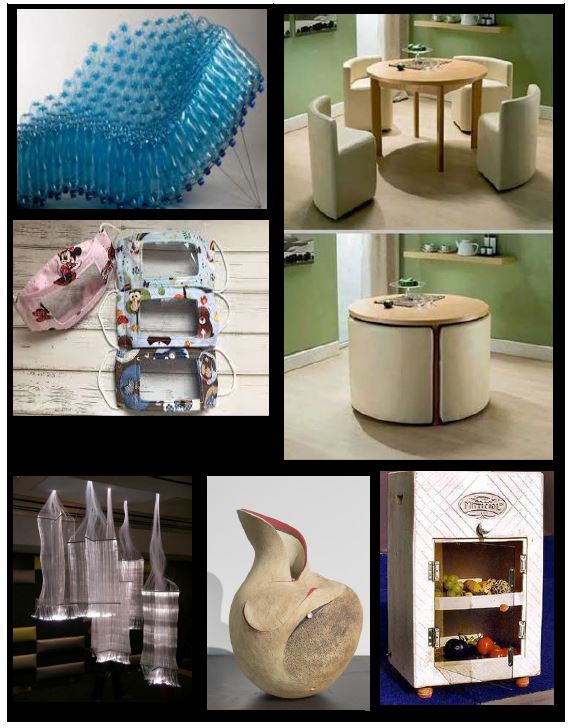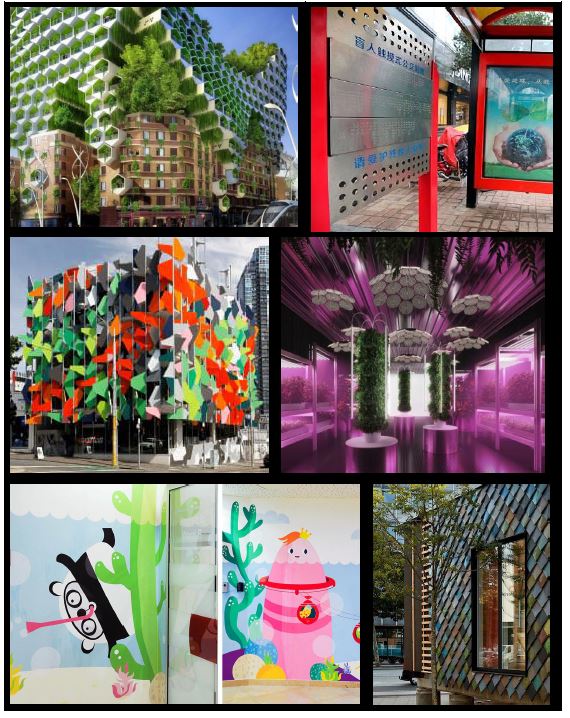DESIGN PAPER 2 GRADE 12 QUESTIONS - NSC PAST PAPERS AND MEMOS NOVEMBER 2021
Share via Whatsapp Join our WhatsApp Group Join our Telegram GroupINSTRUCTIONS AND INFORMATION
- This question paper consists of TWO sections:
TOPIC 1: The examination sourcebook/workbook (50 marks)
TOPIC 2: The final practical examination product (50 marks)
TOTAL: 100 marks - The question paper has TWO briefs/themes. Choose ONE of the two options.
BRIEF/THEME 1: AFROFUTURISM
THE BRIEF:
Afrofuturism aims to celebrate African culture and technology in bold and innovative, 21st century expressions. Afrofuturism is also described as a movement in literature, music and art featuring futuristic or science fiction imagery that incorporates elements of black cultural mythology and history. It is a powerful creative force that merges technology and creativity, providing a positive account of Africa and its future, with the aim to counteract negative perceptions of Africa.
Afrofuturism sees Africa as a powerful, technologically advanced and well-resourced continent. Important Afrofuturist works include, Jay-Z and Beyonce's 'Family Feud' music video, set in 2444 and directed by UCLA's Ava DuVernay, as well as the movie Black Panther (2018) directed by Ryan Coogler.
Create an innovative design solution inspired by Afrofuturism for a futuristic post-Covid South Africa, in a bid to restore hope and positivity for South Africans.
Create a Visual Communication/Information Design and/or Digital Design solution fusing science fiction and fantasy with African art, history or mythology to re-envisage a post-Covid South Africa through, e.g. a campaign or corporate identity that includes a logo, letterhead, business card, packaging, car branding, a short video advertisement, an emotive poster or a T-shirt or sweater design.
Create a Surface Design or Two-dimensional Craft Design solution that promotes South African resilience and quirkiness in an Afrofuturist style in, e.g. wallpapers, textile fabric, or any other surface pattern solution.
Create a Product Design or Three-dimensional Craft Design solution that can be purchased to promote economic recovery post-Covid-19, e.g. an ultramodern costume, helmet, jewellery and ceramics. Here designers can use African traditional craft techniques in a high-tech way to suit a futuristic society.
Create an Environmental Design solution that can be seen in examples such as futuristic signage, bus stop shelters and supermarket interiors.
You are required to research the concept of Afrofuturism and the various designs that it can inspire and incorporate by reading newspapers articles, watching the news, reading magazine articles and doing image searches on the internet. This research must be presented as part of your sourcebook/workbook of Topic 1. Refer to the criteria for the design process and final product together with the assessment guidelines.
GLOSSARY: AFROFUTURISM Futuristic: having or involving a very modern machine or technological aesthetic. Forms become jagged and geometric, lines are straight and clean, and textures are smooth creating a sense of speed and dynamism. A fantasy, surreal world is created where the future is dominated by robotic machines. |
The following images are examples of Afrofuturistic designs in different design categories.
Do NOT copy the examples given.
VISUAL COMMUNICATION/INFORMATION DESIGN AND/OR DIGITAL DESIGN
SURFACE DESIGN AND TWO-DIMENSIONAL CRAFT DESIGN
PRODUCT DESIGN AND THREE-DIMENSIONAL CRAFT DESIGN
ENVIRONMENTAL DESIGN
BRIEF/THEME 2: DESIGN SAVES THE WORLD
THE BRIEF:
Design can alter, transform and improve the quality of human lives by creating awareness and solutions to specific socio-cultural problems, such as hunger, disease, homelessness, housing, pollution or the impact of natural disasters. Socio-cultural problems include health problems like Covid-19, TB, malaria, diabetes, mental health and physical disabilities. Other issues that could be addressed are lack of access to education, electricity and infrastructure, such as clean water or sanitation. By designing products to solve these problems designers can actively contribute to the improvement of people's lives and saving the world.
Create an innovative design solution inspired by a socio-cultural or environmental issue that you have identified in your community.
Create a Visual Communication/Information Design and/or Digital Design solution that addresses a socio-cultural issue in your community. One example could be designing for a health campaign focusing on hypertension using only symbols in order to reach a broader audience. Your campaign could include designs for a logo, poster, billboard, packaging and a T-shirt. It could also include a mobile UX design or info graphic, providing tips on how to lower one's blood pressure.
Create a Surface Design or Two-dimensional Craft Design solution that promotes a change in public perception and handling of a specific environmental and social issue, e.g. water recycling methods. This could be communicated on a wallpaper/textile or other surface design that illustrates ways of recycling water.
Create a Product Design or Three-dimensional Craft Design solution that can be purchased to promote awareness of a sociocultural issue you have identified in your community or South Africa at large. For example the high rate of unemployment in the country is addressed by design entrepreneurs, such as Mielie, who are creating products, such as bags and cushions, with social groups and selling them online in order to initiate economic recovery. Other examples of products that can be created include industrial products, ceramics and furniture design.
Create an Environmental Design solution that solves or creates awareness of a sociocultural problem. One example could be a mural design for the interior of a paediatric/children's hospital that contributes to a friendly and playful environment which promotes physical and emotional recovery. The mural design would help alleviate children's fear of going to hospital.
You are required to research the concept 'Design Saves the World' and the various designs that it can inspire by reading newspaper articles, watching the news, reading magazine articles and doing image searches on the internet. This research must be presented as part of your sourcebook/workbook of Topic 1. Refer to the criteria for the design process and final product together with the assessment guidelines.
GLOSSARY: DESIGN SAVES THE WORLD Perception: the way in which something is regarded, understood or interpreted. Infrastructure: the basic physical and organisational structures and facilities, such as buildings, roads, power supplies, bridges, water supply and sanitation, that are needed for the operation of a society. Mobile UX design: the design of applications (apps), like Uber Eats, for hand-held and wearable devices, such as cellphones, cameras and tablets. |
The following images are examples of designs that save lives in different design categories.
Do NOT copy the examples given.
VISUAL COMMUNICATION/INFORMATION DESIGN AND/OR DIGITAL DESIGN
SURFACE DESIGN AND TWO-DIMENSIONAL CRAFT DESIGN
PRODUCT DESIGN AND THREE-DIMENSIONAL CRAFT DESIGN
ENVIRONMENTAL DESIGN
REQUIREMENTS
SECTION A
TOPIC 1: THE DESIGN PROCESS [50]
- All processIpreparatory work for your design must be shown in a sourcebook/ workbook.
- This will involve the processes from conceptualisation to realisation.
- Thorough investigation of problems posed by the design brief should be shown.
- The sourcebook/workbook must be presented in the form of an album (that is in book form).
- It must open easily and have pages that turn easily.
- The sourcebook/workbook must be made of light material to facilitate transport where work is moderated at a central venue.
- Ensure that the sourcebook/workbook is presented professionally.
NOTE:
- As TOPIC 1 (process/preparation) has the same mark allocation as TOPIC 2 (the final product), it should be given enough time to acknowledge its importance.
- Your teacher may be involved in this preliminary preparatory session (TOPIC 1 only).
- You may work at home.
CRITERIA FOR THE DESIGN PROCESS (TOPIC 1)
You should present the following (refer to the NSC Design Examination Guidelines):
- Expression of intention and rationale (10)
- Evidence of research, experimentation (10)
- Evidence of detailed planning (10)
- Evidence of development and reflection (10)
- Presentation related to the final concept (10)
SECTION B
TOPIC 2: THE FINAL PRODUCT [50]
Although it is recommended that a two-dimensional design should NOT be larger than A2 in size, candidates' work is not restricted regarding size.
The size of a three-dimensional design will depend on the function of the object being made. Take into account that the final product might have to be transported to a central marking venue, and you should therefore be mindful of possible problems during transportation.
NOTE:
- Your teacher may NOT assist you in any way during the final production of the design.
- ALL work must be done under the teacher's and/or appointed invigilator's supervision at your school.
- Any form of direct copying/plagiarism or of work that is not your original work will be strictly penalised.
- A declaration of authenticity (ADDENDUM A) must be completed by yourself and the chief invigilator/teacher.
- Work must be done on a continuous basis, e.g. during three consecutive days under controlled circumstances.
CRITERIA FOR THE DESIGN PRODUCT (TOPIC 2)
You should use the following criteria (refer to the NSC Design Examination Guidelines):
- Creativity/Originality/Interpretation in terms of the concept and solutions that are relevant to the brief (10)
- Evidence of design involvement: the appropriate use of design elements and principles (10)
- Technique/Craftsmanship/Method (10)
- The design solution with evidence of a maximum of 24 hours' work under controlled circumstances (10)
- Profe ssional presentation and functionality of the design solution (10)
(10) [50]
TOTAL: TOPIC 1 (50) + TOPIC 2 (50) 100
INSTRUCTIONS TO THE TEACHER
PRACTICAL EXAMINATION: TOPIC 1 (50 MARKS) AND TOPIC 2 (50 MARKS) – TASK 7
- This practical examination consists of ONE question paper. This question paper comprises TWO parts, TOPIC 1 (the examination sourcebookIworkbook and TOPIC 2 (the final practical examination product).
- This practical question paper should be given to the candidates on Monday 26 July 2021. The final submission date will be Friday 22 October 2021.
- TOPIC 1 (design process) has the same weighting as TOPIC 2 (the final product) and it should therefore be given enough time to acknowledge its importance.
- Consequently, candidates should have enough time to do their TOPIC 1 (preparation/design process). The teacher may only be involved in this preliminary preparatory session and NOT in TOPIC 2. Due to the preparatory nature of TOPIC 1, candidates are allowed to work at home.
- Candidates must use the TOPIC 1 sourcebookIworkbook as a point of reference during their TOPIC 2 examination. Both TOPIC 1 and TOPIC 2 examination work must be submitted to the teacher/invigilator immediately after the TOPIC 2 examination has been completed.
- The teacher may NOT assist the candidate in any way during the final production of the design product (TOPIC 2).
- Any form of direct copying/plagiarism or work that is not the candidate's original work will be strictly penalised.
- TOPIC 2 must be done on a continuous basis during contact time, e.g. during three consecutive days under controlled circumstances.
- TOPIC 2 must be done at the candidate's examination centre, under the supervision of the teacher/invigilator. TOPIC 2 must NOT be done at home.
- TOPIC 2 must NOT be removed from the examination centre under any circumstances.
- Each province will determine the marking process of TOPIC 1 (sourcebookI workbook) and TOPIC 2 (final product). Schools will be notified by the provinces regarding the date, time and venue for the submission of work to the examination centres, where applicable.
- The examination TOPIC 1 should be professionally presented in a sourcebookIworkbook in an album format.
- The sourcebook/workbook and final product must be labelled neatly and clearly.
- ADDENDUM A must be completed in full and the school stamp should appear in the appropriate space. Attach ADDENDUM A securely to the final examination work (sourcebook/workbook and/or final product).
ASSESSMENT RUBRIC
| OUTCOMES | REQUIREMENTS | WEIGHTING % | MARKER 1 | MARKER 2 | AGREED CANDIDATE'S MARK | TOTAL MARK | |
SOURCEBOOK/ |
TOPIC 1 | Expression of intention and rationale: Brainstorm or do a mind map of ideas to explore the theme of the brief. Develop a concept. A rationale should be provided to validate the solution found. | 10 |
50 | |||
Evidence of research, experimentation: Research the brief and find relevant source materials (visual references). Show evidence of research by completing thumbnail sketches of ideas. Design a few different solutions that explore the brief. Evidence of experimentation, e.g. a mood board should be visible. | 10 | ||||||
Detailed planning: Generative drawings should explore a variety of solutions to the brief (different techniques and materials). Drawing skill development should be evident. | 10 | ||||||
Evidence of development and reflection: Shows evidence of the final design solution in the form of a detailed, annotated drawing/collage/maquette/prototype, etc. Exploration of different materials and techniques should be encouraged. Reflection of process must be evident. | 10 | ||||||
Presentation: Careful consideration is given to presentation of the sourcebook. This process should be creatively presented. | 10 | ||||||
| SOURCEBOOK/WORKBOOK TOTAL | 50 | ||||||
THE FINAL PRODUCT |
TOPIC 2 | Creativity/Originality/Interpretation in terms of the concept and solutions that are relevant to the brief: Is the work unique, original, and relevant to the brief? Does the product solve the problem? Evidence of design involvement: the appropriate use of design elements and principles: Overall impression. How have the elements and principles been used to create a unique design solution? Technique/Craftsmanship/Method: How technically competent is the final product? How adequate and professional is the craftsmanship? | 10 |
50 | |||
| 10 | |||||||
| 10 | |||||||
Evidence of 24 hours of work: Evidence of and utilisation of available time to complete the product. Does the design solution show legitimate involvement in the making of the design product? | 10 | ||||||
Professional presentation and functionality of the design solution: Does the product fulfil its function? Is the product presented professionally and neatly? Does the product work in relation to the brief? | 10 | ||||||
| FINAL PRODUCT TOTAL | 50 | ||||||
| GRAND TOTAL | 100 |
